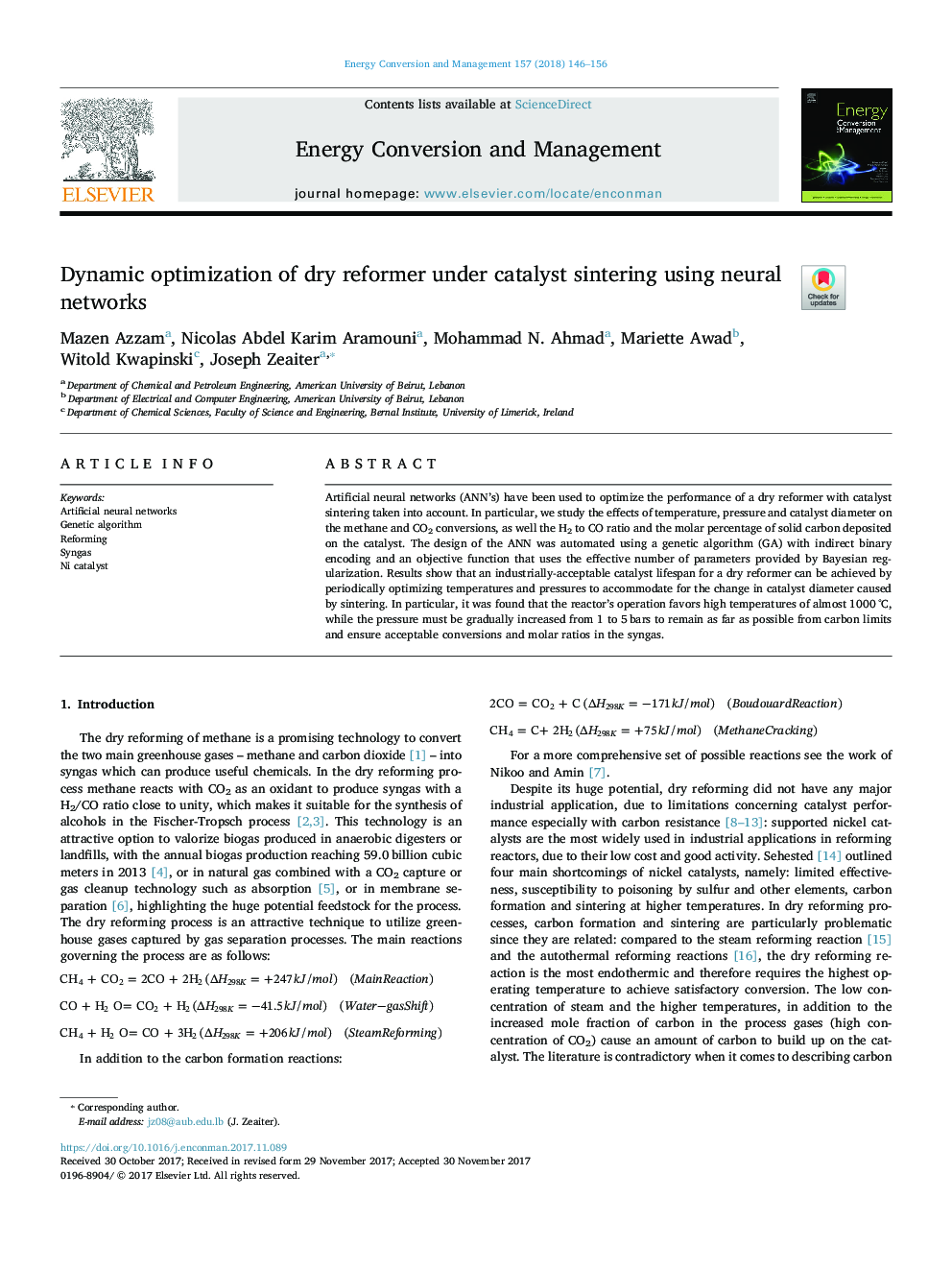| Article ID | Journal | Published Year | Pages | File Type |
|---|---|---|---|---|
| 7159321 | Energy Conversion and Management | 2018 | 11 Pages |
Abstract
Artificial neural networks (ANN's) have been used to optimize the performance of a dry reformer with catalyst sintering taken into account. In particular, we study the effects of temperature, pressure and catalyst diameter on the methane and CO2 conversions, as well the H2 to CO ratio and the molar percentage of solid carbon deposited on the catalyst. The design of the ANN was automated using a genetic algorithm (GA) with indirect binary encoding and an objective function that uses the effective number of parameters provided by Bayesian regularization. Results show that an industrially-acceptable catalyst lifespan for a dry reformer can be achieved by periodically optimizing temperatures and pressures to accommodate for the change in catalyst diameter caused by sintering. In particular, it was found that the reactor's operation favors high temperatures of almost 1000â¯Â°C, while the pressure must be gradually increased from 1 to 5â¯bars to remain as far as possible from carbon limits and ensure acceptable conversions and molar ratios in the syngas.
Related Topics
Physical Sciences and Engineering
Energy
Energy (General)
Authors
Mazen Azzam, Nicolas Abdel Karim Aramouni, Mohammad N. Ahmad, Mariette Awad, Witold Kwapinski, Joseph Zeaiter,
